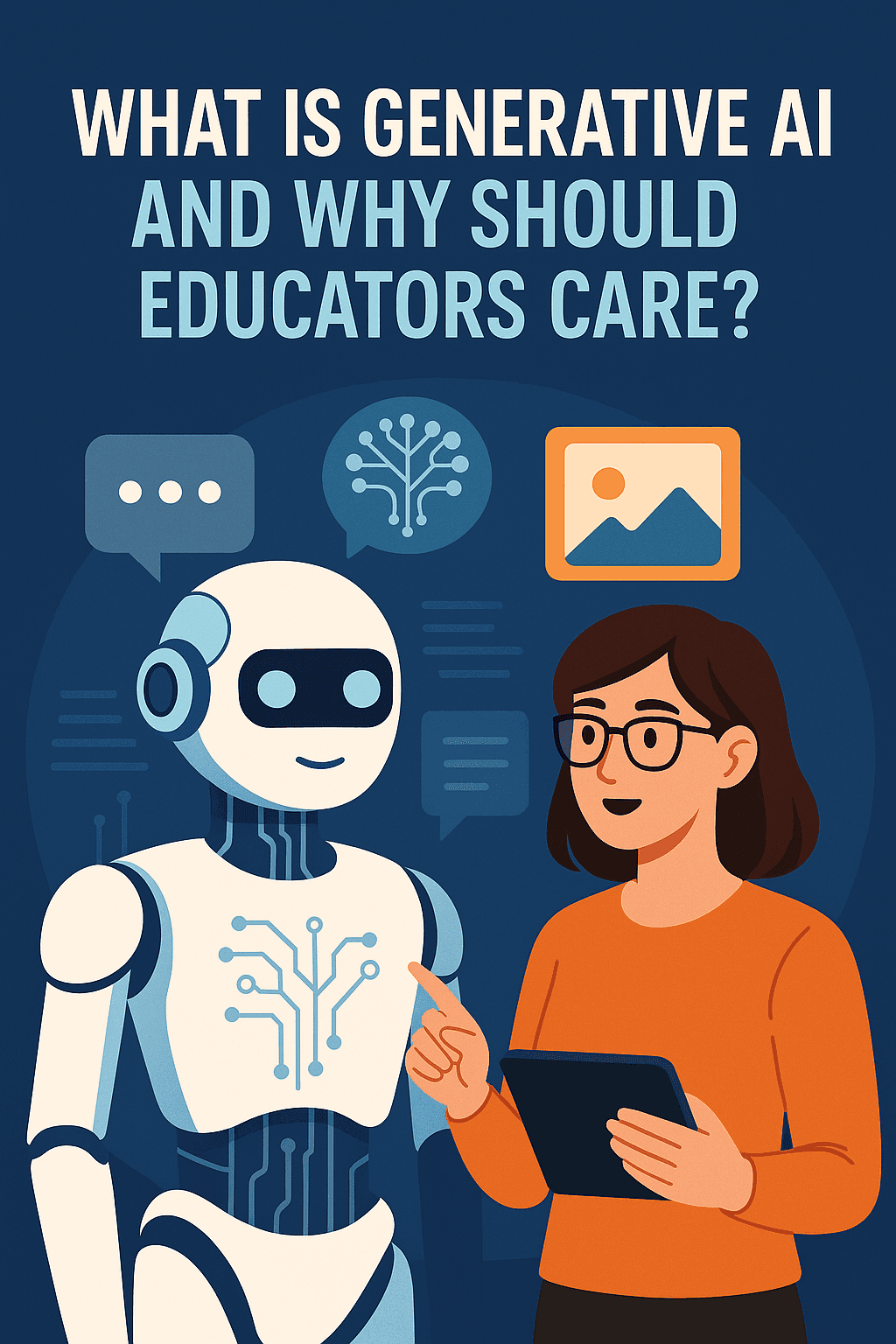
What generative AI is and why educators should care has become one of the most discussed topics in education circles today. As artificial intelligence rapidly evolves, so too does its relevance to teaching, learning, and curriculum delivery. For educators at all levels—from primary to higher education—understanding generative AI is no longer optional. It’s essential.
Generative AI refers to a subset of artificial intelligence that can create new content, such as text, images, audio, video, and even code. Unlike traditional AI, which simply analyses and classifies data, generative AI produces new material based on patterns it has learned. Popular tools like ChatGPT, DALL·E, Gemini, and Claude are examples of this technology in action.
So, what generative AI is and why educators should care goes far beyond hype—it’s about preparing students for a future shaped by automation, creativity, and intelligent systems.
Innovative Practices: How Case Studies Influence Product Design
What Exactly Is Generative AI?
Generative AI models are typically trained on vast datasets, enabling them to generate human-like responses, summaries, translations, essays, artwork, and much more. These tools are built using deep learning architectures like transformers, which allow for understanding and replicating complex patterns in language or visuals.
For example, a teacher could prompt ChatGPT with, “Create a 500-word essay on climate change for Year 10 students,” and receive a high-quality draft within seconds. Alternatively, DALL·E could be used in an art class to generate original imagery based on textual descriptions—like “a surrealist painting of a city floating in the sky.”
Why Should Educators Care?
Understanding what generative AI is and why educators should care becomes clearer when we examine its impact across multiple teaching domains:
1. Enhancing Teaching Efficiency
Teachers spend countless hours planning lessons, creating assessments, and writing feedback. Generative AI can streamline these tasks. For example:
- Generate lesson plans aligned with curriculum outcomes
- Create differentiated activities for mixed-ability groups
- Automate rubric-based feedback on student writing
Tools like MagicSchool AI and Eduaide.ai are built specifically for educators, helping reduce admin time while maintaining quality.
2. Personalising Student Learning
Generative AI supports adaptive learning environments by delivering tailored content to each student. AI-powered platforms can recommend personalised exercises, rewrite reading materials to suit different literacy levels, or even act as virtual tutors answering student queries.
Imagine a learner struggling with Shakespeare—an AI chatbot could explain the themes of Macbeth in simpler language or provide interactive quizzes to reinforce comprehension.
3. Supporting Inclusive Education
For learners with special needs, generative AI tools can make education more accessible. Text-to-speech, visual story generators, or customised reading materials can be adapted to suit a wide range of needs—supporting universal design for learning (UDL) principles.
4. Fostering Digital and AI Literacy
Understanding how to engage critically with generative AI tools is now a core skill. Educators have a role to play in teaching students:
- How to craft effective prompts
- How to assess AI-generated content
- How to avoid plagiarism and maintain academic integrity
By incorporating these discussions into class, students learn not just how to use AI—but how to use it ethically and responsibly.
5. Revolutionising Assessment Practices
Generative AI is also reshaping how assessment is designed and delivered. Teachers can use AI to:
- Generate questions aligned with Bloom’s Taxonomy
- Produce model answers for peer-review activities
- Detect AI-generated student submissions using detection tools like GPTZero or Turnitin AI
AI can even help educators create scenario-based assessments or project briefs that are dynamic, relevant, and skills-based.
Ethical Considerations for Educators
While the benefits are clear, there are ethical and professional issues to consider:
- Plagiarism and authenticity: How can teachers ensure work is student-generated?
- Bias and misinformation: Generative AI tools may reflect training data biases.
- Data privacy: Are students’ queries and inputs securely handled?
Educators should introduce AI literacy as a key digital citizenship competency and develop clear AI usage policies in their institutions.
Final Thoughts
Understanding what generative AI is and why educators should care empowers teachers to embrace the future of learning. Generative AI is not here to replace educators—but to support them. It frees time for creativity, improves differentiation, and prepares students for a world where AI is embedded in every industry.
As schools and universities evolve, those who harness the responsible power of AI will not only stay relevant—they will lead the way in shaping inclusive, innovative, and effective education systems.
Visit The Case HQ for 95+ courses
Read More:
Unveiling the Power of Case Studies in Renewable Energy
Case Studies in Sports: A Game-Changing Approach
Navigating Case Studies in AI and Machine Learning
The Impact of Case Studies on Women’s Empowerment Initiatives
How Case Studies Influence Political Campaign Strategies
The Rise of Intelligent Tutoring Systems: A New Era in Education
AI and the Future of Assessment: From Standardized Tests to Adaptive Learning
AI in Early Childhood Education: Promises and Pitfalls
How AI is Shaping the Role of Educators in the 21st Century
AI and Special Education: Customizing Learning for Every Student
The Art of Crafting Compelling Case Studies: Tips for Success
How to Use Case Studies to Showcase Your Expertise
https://thecasehq.com/essential-guide-what-is-generative-ai-and-why-should-educators-care/?fsp_sid=996
Comments
Post a Comment